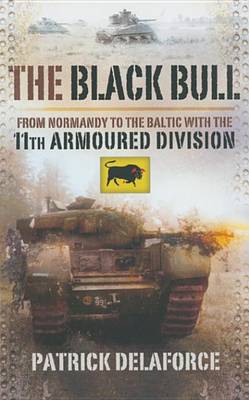Regiments at War
2 total works
Christened the "Polar Bear Butchers" by the infamous Lord Haw Haw after its involvement in the ferocious battles following D-Day at Cristol, Fontenay, Tessel Wood and Rauray, the 49th Infantry Division thrust its way out of the beach head and fought with distinction in the bloody campaign to liberate Europe in 1944-5. Originally a territorial unit with its roots in the West Riding of Yorkshire, the 49th Infantry Division was formed in 1907 and fought with honour thoughout World War I, earning three Victoria Crosses. With the onset of World War II, the division saw action in the ill-fated Norwegian campaign in 1940, before it was appointed to garrison Iceland where it stayed for two years. During this time at the edge of the Arctic Circle, the 49th earned its title and divisional insignia of the "Polar Bears". In August 1944, under the command of the Canadian Army, the Polar Bears acted as Monty's left flank after the invasion of France. Following the battle for Normandy, the Polar Bears played a key role in the capture of Le Havre, campaigned vigorously in Belgium and garrisoned the "island" between Arnhem and Nijmegen during the winter of 1944.
They helped take Arnhem and then liberated Utrecht and Hilversum; and the Recce regiment were the first to arrive with their armoured cars in Amsterdam. In the final weeks of the war the Polar Bears played a humanitarian role by bringing desperately needed food supplies to the starving population of Holland. In their 11 months of combat during 1944-5, the Polar Bears suffered 11,000 casualties and earned a Victoria Cross. The author draws on contributions from the soldiers who fought with the Polar Bears - privates, NCOs and officers alike. In their own words they tell just what it was like as they fought through from Normandy to the relief of Holland.
They helped take Arnhem and then liberated Utrecht and Hilversum; and the Recce regiment were the first to arrive with their armoured cars in Amsterdam. In the final weeks of the war the Polar Bears played a humanitarian role by bringing desperately needed food supplies to the starving population of Holland. In their 11 months of combat during 1944-5, the Polar Bears suffered 11,000 casualties and earned a Victoria Cross. The author draws on contributions from the soldiers who fought with the Polar Bears - privates, NCOs and officers alike. In their own words they tell just what it was like as they fought through from Normandy to the relief of Holland.
Military historians agree that amongst the best armoured divisions in north-west Europe during World War II was the British 11th Armoured Division. This work tells the story of the Division in the words of over 100 soldiers who fought with it. It includes eye-witness accounts, from the Normandy Landings to the capture of Amiens, the taking of Antwerp, "Operation Market Garden", action at Ardennes, the final slog into Germany and the horrific discoveries at Belsen Concentration Camp. The book shows what it was really like to be in combat during that extraordinary campaign to liberate Europe 50 years ago. It reveals the thoughts, feelings and experiences of these veterans, who were at the time in their teens and twenties. The Division suffered 10,000 casualties, with almost 2000 lost in action. This is a story of courage and comradeship of ordinary men plunged into an extraordinary situation.

